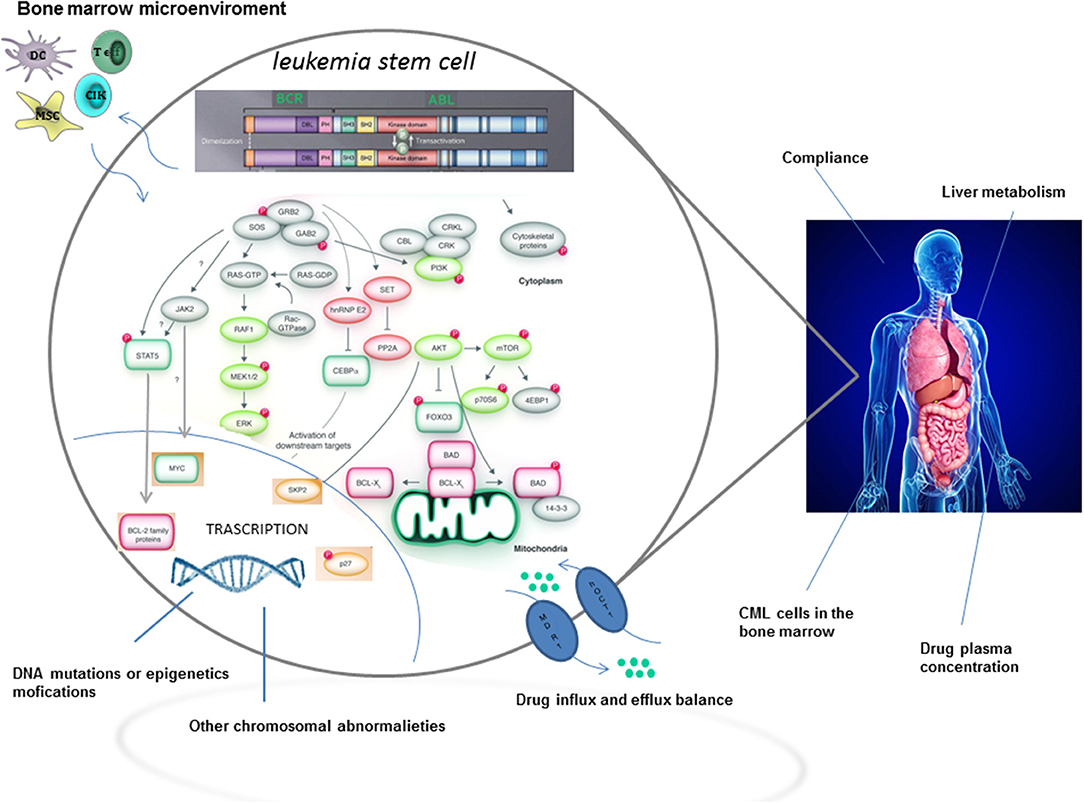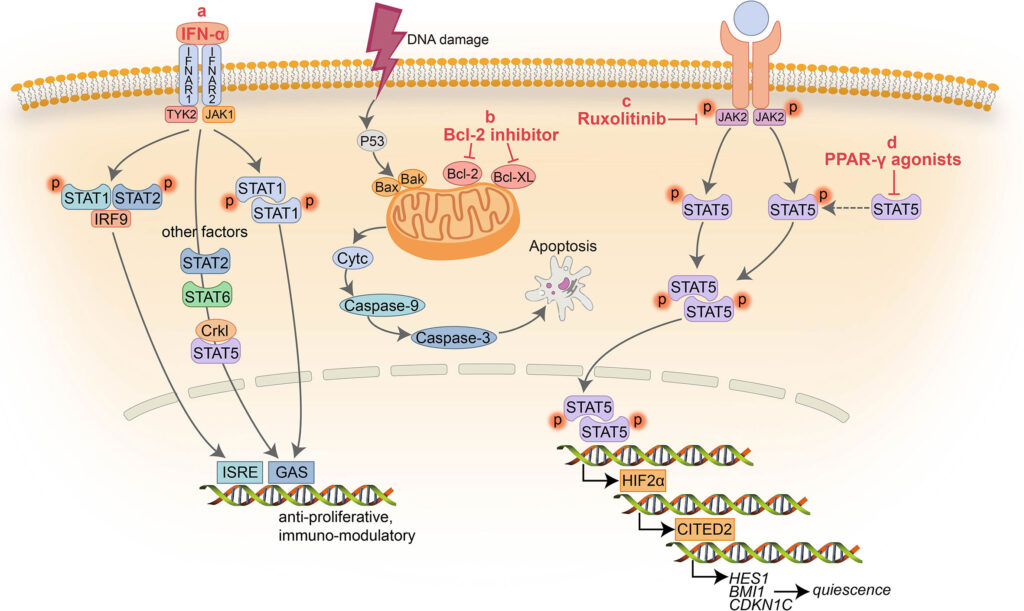Chronic Myeloid Leukemia, commonly referred to as CML, is a type of cancer that affects the blood and bone marrow. This condition arises due to an abnormality in the bone marrow, leading to the overproduction of white blood cells. Unlike acute forms of leukemia, chronic myeloid leukemia progresses slowly, often allowing patients to live for years with proper treatment. In this article, we will explore the intricacies of this disease, including its causes, symptoms, and available treatments.

Understanding Chronic Myeloid Leukemia
Chronic myeloid leukemia begins in the bone marrow, which is the soft tissue inside bones responsible for producing blood cells. Under normal circumstances, the bone marrow produces red blood cells, white blood cells, and platelets in balanced proportions. However, in people with this condition, the bone marrow starts generating excessive amounts of a specific type of white blood cell known as granulocytes. These abnormal cells do not function properly and can crowd out healthy blood cells, disrupting the body’s ability to fight infections, carry oxygen, and control bleeding.
The Role of the Philadelphia Chromosome
A key characteristic of chronic myeloid leukemia is the presence of an abnormal chromosome called the Philadelphia chromosome. This genetic mutation occurs when parts of two chromosomes exchange places, resulting in the creation of a new gene called BCR-ABL. The BCR-ABL gene produces an enzyme that promotes the uncontrolled growth of white blood cells. Understanding this genetic abnormality has been pivotal in developing targeted therapies for this condition.
Causes of Chronic Myeloid Leukemia
While the exact cause of chronic myeloid leukemia remains unknown, researchers have identified several factors that may contribute to its development. It is important to note that this condition is not contagious and cannot be passed from person to person. Below are some potential causes and risk factors:
Genetic Mutations
- Philadelphia Chromosome: As mentioned earlier, the presence of the Philadelphia chromosome is a hallmark of chronic myeloid leukemia. This genetic mutation triggers the production of abnormal white blood cells.
- Other Genetic Factors: Although rare, certain inherited genetic disorders may increase the risk of developing this condition.
Environmental Exposures
- Radiation Exposure: High levels of radiation, such as those experienced during nuclear accidents or radiation therapy for other cancers, have been linked to an increased risk of developing chronic myeloid leukemia.
- Chemical Exposure: Prolonged exposure to certain chemicals, such as benzene, may also elevate the risk of this disease.
Age and Gender
Chronic myeloid leukemia is more commonly diagnosed in adults, particularly those over the age of 60. Men are slightly more likely to develop this condition than women, although the reasons for this gender disparity remain unclear.
Symptoms of Chronic Myeloid Leukemia
In its early stages, chronic myeloid leukemia often does not cause noticeable symptoms. Many individuals are diagnosed during routine blood tests performed for unrelated reasons. As the disease progresses, however, symptoms may become more apparent. Common signs and symptoms include:
Fatigue and Weakness
Patients with this condition frequently experience persistent fatigue and weakness due to anemia, which occurs when the body does not produce enough healthy red blood cells to carry oxygen throughout the body.
Unexplained Weight Loss
Many individuals with chronic myeloid leukemia notice significant weight loss without trying. This symptom is often accompanied by a loss of appetite.
Night Sweats and Fever
Excessive sweating during the night and low-grade fevers are common in people with this condition. These symptoms are often mistaken for signs of infection but may indicate the presence of leukemia.
Bone Pain
Pain or tenderness in the bones, particularly in the ribs or sternum, can occur as the bone marrow expands to accommodate the overproduction of abnormal cells.
Enlarged Spleen
An enlarged spleen is another frequent symptom of chronic myeloid leukemia. This can lead to feelings of fullness or discomfort in the abdomen, even after eating small amounts of food.
Frequent Infections
Because the abnormal white blood cells produced in chronic myeloid leukemia do not function properly, patients may experience recurring infections. This happens because the immune system becomes compromised.
Treatments for Chronic Myeloid Leukemia
Advances in medical research have significantly improved the prognosis for individuals diagnosed with chronic myeloid leukemia. While there is currently no cure for this condition, various treatments can help manage the disease and allow patients to lead relatively normal lives. Below are some of the most common treatment options:
Targeted Therapy
Targeted therapy has revolutionized the treatment of chronic myeloid leukemia. Medications known as tyrosine kinase inhibitors specifically target the enzyme produced by the BCR-ABL gene, effectively halting the growth of abnormal white blood cells. Examples of these medications include imatinib, dasatinib, and nilotinib. Targeted therapy is often the first line of treatment and has shown remarkable success in achieving remission.
Chemotherapy
Although less commonly used today due to the effectiveness of targeted therapy, chemotherapy may still be prescribed in certain cases. Chemotherapy drugs work by killing rapidly dividing cells, including cancerous ones. However, this treatment can also damage healthy cells, leading to side effects such as nausea, hair loss, and fatigue.
Stem Cell Transplant
For younger patients or those who do not respond well to other treatments, a stem cell transplant may be considered. This procedure involves replacing damaged bone marrow with healthy stem cells from a donor. While stem cell transplants can potentially cure chronic myeloid leukemia, they carry significant risks, including graft-versus-host disease and infection.
Interferon Therapy
Interferon therapy was once a primary treatment for chronic myeloid leukemia before the advent of targeted therapy. Interferons are proteins that boost the immune system’s ability to fight cancer. Although this treatment is less effective than targeted therapy, it may still be used in certain situations, such as when patients cannot tolerate other medications.
Clinical Trials
Participating in clinical trials provides access to experimental treatments that may not yet be widely available. These studies aim to test new therapies and improve existing ones. Patients interested in clinical trials should consult their healthcare provider to determine eligibility and potential benefits.
Living with Chronic Myeloid Leukemia
Managing chronic myeloid leukemia requires a comprehensive approach that includes regular monitoring, adherence to treatment plans, and lifestyle adjustments. Regular follow-up appointments with healthcare providers are essential to track the progression of the disease and make necessary adjustments to treatment. Additionally, adopting a healthy lifestyle can help improve overall well-being and reduce the risk of complications.
Diet and Exercise
Maintaining a balanced diet rich in fruits, vegetables, lean proteins, and whole grains can support the immune system and promote overall health. Regular physical activity, tailored to individual capabilities, can also enhance energy levels and reduce stress.
Emotional Support
A diagnosis of chronic myeloid leukemia can be emotionally challenging. Seeking support from family, friends, or professional counselors can help individuals cope with the psychological impact of the disease. Joining support groups, either in person or online, can provide valuable connections with others facing similar challenges.
Monitoring for Side Effects
Patients undergoing treatment for chronic myeloid leukemia should be vigilant about monitoring for side effects. Common side effects of targeted therapy include muscle pain, skin rashes, and fluid retention. Reporting any unusual symptoms to a healthcare provider promptly ensures timely intervention and management.





